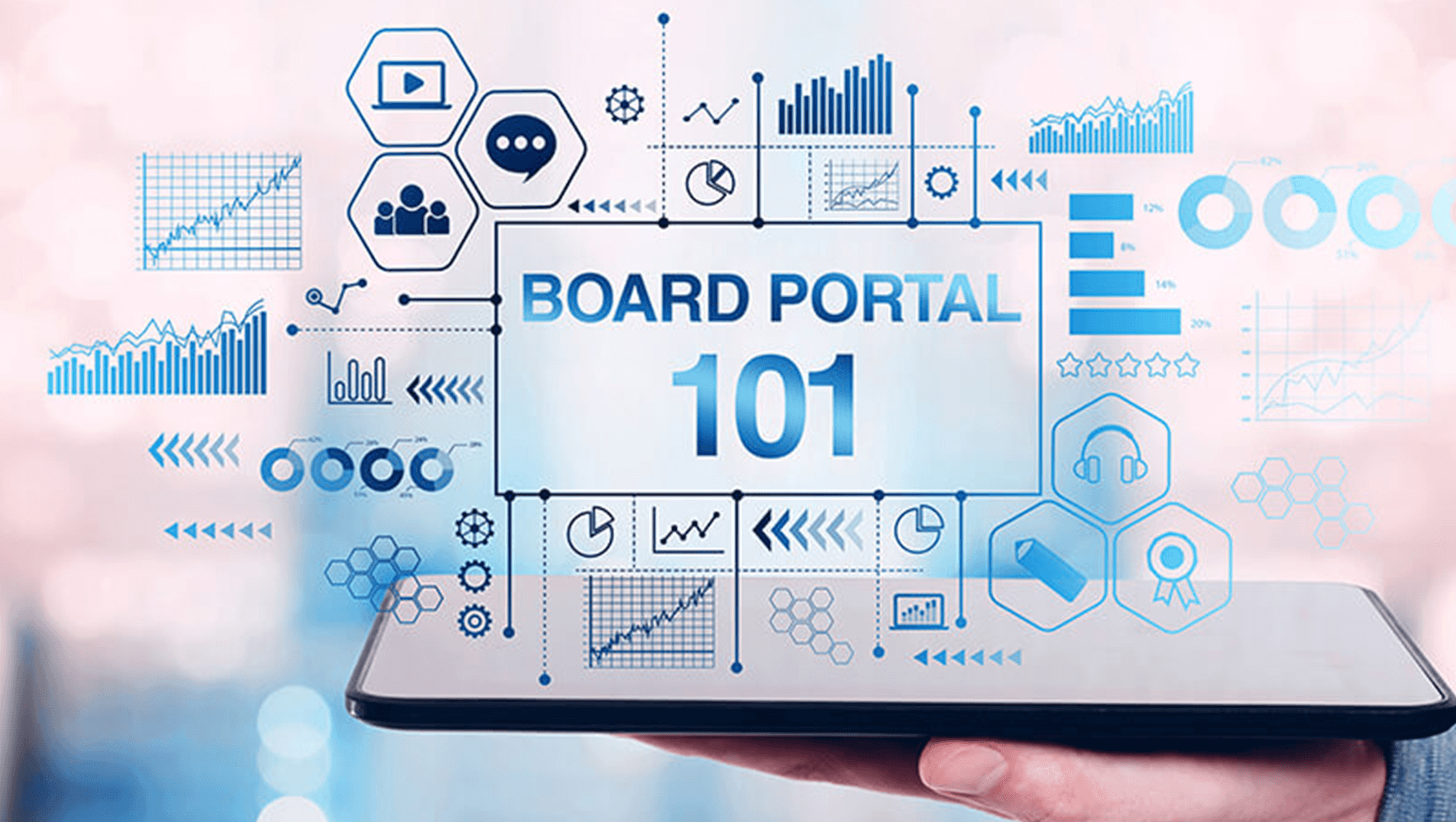Going paperless: tips for transitioning to a board portal
Transitioning from paper-based processes to a digital board portal is a significant step forward for any organisation. A board portal—also known as board management software—streamlines meeting preparation, enhances governance workflows, and improves board communication. But like any change, the shift to a digital solution requires careful planning, clear communication, and structured implementation.
This article will walk you through how to choose the right board portal for your organisation, how to set it up for success, and how to bring your board along for the journey. Whether you're looking to reduce admin time, strengthen compliance, or improve board engagement, this article offers practical, real-world advice to help you transition to your new board management software with confidence.
Table of contents
Choosing a board portal
Congratulations! You've made the decision to embrace governance software.
There are several quality products on the market, each with strengths and weaknesses, some offering different modules or tiers of governance support.
When you're selecting your board portal consider prioritising:
- User experience: Is it intuitive? A well-designed board portal offers a clean, structured interface where agendas, board packs, and minutes are easily navigable. Some platforms include guided onboarding to help new users get up to speed quickly.
- Agenda automation: Look for a solution with a drag-and-drop agenda builder and reusable templates, which can significantly cut down agenda preparation time.
- Board packs and minutes: How easy is accessing board papers for reference when taking minutes? Can the board pack be presented at the same time as taking the minutes?
- Governance workflow: Can all board tasks and activities be done in the board portal? Tasks such as signing letters, flying minutes, emailing reports, calendar invitations, joining an electronic meeting? An advanced board portal will minimise manual work.
- Security and compliance: top-tier governance platforms include end-to-end encryption, data security and replication, multi-factor authentication, and role-based access controls to prevent unauthorised access.
- Search functionality: Can board members locate key documents instantly, even from past board meetings? How easy is it to complete board actions, view out-of-cycle reports, or sign legal paperwork?
- Customer support: How quickly can a real person be contacted for support?
Take your time in choosing the best option for your board and organisation, and take advantage of demos and free trials.
How to set up your board portal (aka board management software)
Do it once and do it right!
Once you’ve chosen your board management software, it’s time to transition your tasks and activities from paper and other software to the board portal.
Security, settings, and compliance
Most online portals have customisable security settings to control access levels. A robust board portal will allow you to assign permissions based on roles, ensuring the right people have the right level of access.
When configuring access levels, consider:
- Board and committee members—should have full access to board packs and meetings
- CEO and executive team—may need visibility into agendas, reports and board meeting schedules
- Board secretaries—full access
- Support staff—may require restricted access to assist with logistics but not view sensitive documents
A word on default settings—ensure you work through and remove any ‘demo’ setting from the product. These could include setting the locations of your meetings, quorums for decisions, destruction of notes time frame, and automatic reminders.
Tips:
- Ensure that at least two administrators have full system access in case one is unavailable. Also, it’s a good idea to delay sending invitations out to your first meeting until you have completed the set-up of your new board software.
- Ensure that your board management software solution has user access levels to suit your needs that are easily adjusted. With BoardPro, the permission levels are designed so you can assign different access levels for your administrations, board members, and management. You can also keep sensitive documents in folders only accessible by assigned board members.
Streamlining document management and automation
It’s a good idea to add at least the last board meeting’s agenda and minutes to your board software solution—better yet, upload the past three board meetings for easy reference.
This helps you to:
- have a good experience with the product
- board members can try out the search functions
- encourages familiarity with the product
- assists with setting up decisions, action lists and other functions
Tips:
- If your organisation is audited, consider adding the whole financial year’s minutes to the board portal, so there is one place for the auditor to go for minutes and documents. To do this, it’s more efficient to set up automations from the most current information, so everything is ‘as is’ from the last meeting until the transition to the new board portal.
- Choose a board management software solution that can build meeting agendas that will save time and effort. With BoardPro's Meeting Agenda Builder you can clone an existing agenda, or use the best practice template. BoardPro also automates confirmation of the minutes and review of the action list and interest register.
BoardPro's Meeting Agenda Builder enables you to customise the structure of your agenda by adding sections and agenda items, and using drag-and-drop to easily change the order.
Automating action items and compliance tracking
If your platform includes an automated action tracking system, transfer outstanding actions from your previous paper-based records. You may also need to conduct a similar process to transfer your board's interests to your new interest register.
Tips:
- One option is to add the automated action list to your next board pack, and under the agenda item type in all the actions, with the minutes reflecting the transfer of outstanding actions. A preferred option is to add the actions to the automation from the last board meeting minutes.
-
Choose a board management software solution that will automate those administrative tasks that take time and effort that could be better spent on more strategic work. For example, BoardPro's Actions automates the process of recording, assigning, and tracking actions from end to end. While taking minutes, you can allocate actions to an owner or owners and have reminders sent. In addition, BoardPro captures your board member's interests in a register, so they are all in one place for easy reference.
BoardPro's Actions feature enables action owners to view and update action status on their dashboard, with reminders automatically sent based on the due date.
Governance folders
A well-structured board portal should include dedicated folders for your governance documents.
Compliance
A folder or section for compliance stores the certificates required by company directors, your interests register, insurance policies, and indemnities, and any other compliance requirements.
Induction and governance documents
This folder is a place to store everything including your constitution, code of conduct, governance manual, shareholders agreement, club rules.
Board member room
This is a folder where you can store contact information for your board, appointment letters and so on.
Shareholders' room
This area is for board communications with shareholders, the share register, and storing AGM information. It’s a good place to store a copy of the shareholder’s agreement too.
Resource room
Often board pack become cumbersome due to lengthy information papers or noting papers. By setting up a ‘resource room’ you can have a folder for each meeting and place and non-essential documents that do not relate to decision-making, strategic discussion, or direction requests here.
This declutters board packs and allows directors to focus on decision-making.
If your board management software supports it, in general business you can have an agenda item called ‘for information’ and link it back to the resource centre folder for that meeting.
Reading room
This folder is a useful place to store articles, reports, economic updates and other similar content.
Tip:
- Look for a board software solution with version control and audit logs, so you can track who accessed or modified documents.
- Find a board management solution that includes a place to store all of your documents so they can easily be located. BoardPro's Governance Repository provides you with a lifetime overview of all your meetings and documents. View your meetings in chronological order with instant access to the agenda, board packs and minutes for each meeting. The comprehensive search function allows you to search your entire BoardPro account for any place a keyword has been used.
BoardPro's Governance Repository means all your documents are in one central, secure location. No more digging around in email, hard drives, Dropbox, or Google Drive—all your documents are found in one place.
Creating your first digital agenda
Transitioning to a board portal is more than just going paperless—it’s a strategic move that can enhance governance, improve efficiency, and strengthen board engagement. By taking a structured approach to selection, setup, and onboarding, you can ensure a smooth transition that sets your board up for long-term success. Invest the time upfront to get it right, support your board through the change, and you’ll unlock the full value of your board management software.
Tip:
- When you have the majority of your set-up complete, invite your chair and give them a tour of the software so they feel comfortable with it. You can then have a discussion on best practice agendas going forward.
Training and inducting board members
Managing the mental shift from print to digital
Some board members are excited to embrace a new board management process. For others, the change may present a daunting transition and a reluctant move that’s difficult to accept.
The adoption of a new board portal is a unique opportunity to have a full refresh of your governance practices. Explore governance resources to learn about changes you can make for efficiency and further ways to modernise your governance practices during the transition from paper to digital.
A simple process for inducting your board
The key to success of your new board management software is structured onboarding.
I recommend:
- A welcome email including a 1-2 page guide on ‘how to use the board portal’ guide
- Schedule a 15-minute group training session to walk-through the portal
- Follow-up with individual phone calls to check the comfort and confidence levels, and organise a 1:1 session if needed
- Publish and send the first agenda well in advance
- Send a group email to check everyone’s received the notification; sometimes they end up in spam
- Publish the board pack and send a reminder email on how to annotate and use the tools, with a link to the help section of the portal
- Over the coming weeks send out short emails on how to complete basic tasks in the portal to encourage and guide users
It can take a while to learn and be comfortable with any technological change. The best way I find is to dive right on in, take advantage of chat support and help documents—ask the questions and become the master! Your board will look to you for support, so take the opportunity to become familiar with your new solution, fast.
Tip:
- Start as you mean to go on, and invest in resources to ensure the change management process from paper to board management software is a success.
Going paperless is a strategic move towards good governance
Transitioning to a board portal is more than just going paperless—it’s a strategic move that can enhance governance, improve efficiency, and strengthen board engagement. By taking a structured approach to selection, setup, and onboarding, you can ensure a smooth transition that sets your board up for long-term success. Invest the time upfront to get it right, support your board through the change, and you’ll unlock the full value of your board management software.
Keen to learn more? Watch the free, on-demand webinar 'Going paperless in the boardroom', with Jen Butler, Dauniika Mclean, and Helen van Orton here
When you're ready here's how BoardPro can help
Start a Free Trial — run a whole board meeting cycle for free, no credit card needed. You’ll be able to create board packs in a click, and have all minutes, decisions, actions and interests in one place. Be more effective, save time, and have everyone on the same page! Book a Demo — see BoardPro in action in this 30-minute demo, and have all your questions answered by a BoardPro specialist. You’ll get an introduction to all of BoardPro’s features — see how to set an agenda, create board packs, and take minutes. Attend a Free Governance Webinar — learn from our community of governance experts on subjects such as strategy, understanding board dynamics, reporting, and running effective meetings. You’ll join hundreds of others in these engaging events covering the latest governance topics. Find a Governance Template — practical documents to make governance easy! Templates cover strategic planning, board evaluation, risk assessment, SWOT analysis, and many other essential governance and business topics to grow your organisation and adopt good governance practices. |
Share this
You May Also Like
These Related Stories

The Argument for Board Software

What is a board portal?





